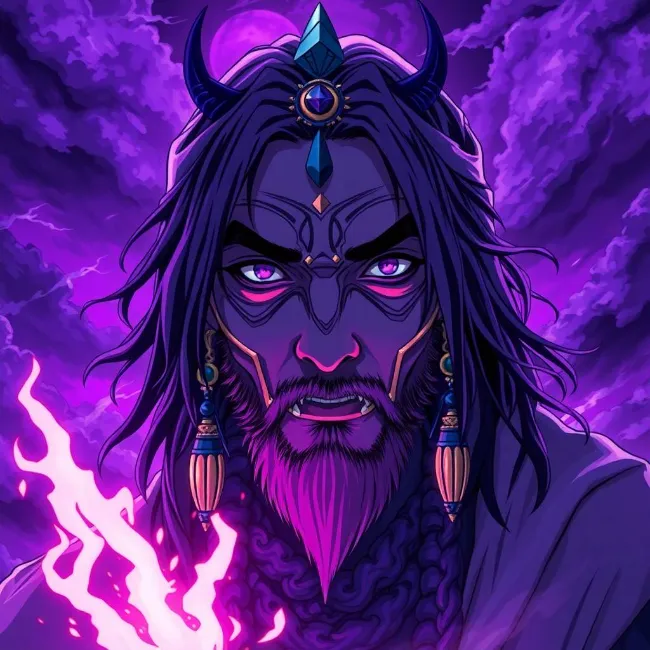The 7 Stages of Shamanic Initiation: Essential Signs and Spiritual Awakening Guide. Discover the transformative journey—explore the 7 stages of shamanic initiation for spiritual growth, awakening, and true self-realization.
Not so long ago, shamanism was among the least recognized words and was rarely mentioned as a healing process when talking about New Age, spirituality, or the like.
Nevertheless, shamanism is an impressive, old, and historical concept and is not only a way of life but also a practice.
It is much more than being a simple term or a pseudoscientific label that is usually grouped with other healing modalities, therapies, or spiritual outlooks—it is actually the way in which we live and the very core of our being.
The truth is quite many individuals are uncovering their shamanic lineage and finding out that they have natural gifts, abilities, and also they receive the higher wisdom along with these.
You can transform your whole life with the truth of 7 stages of shamanic initiation and key sign of shamanic calling from childhood.
In the younger generations, the shamanic lifestyle and thought patterns are more and more getting recognized.
Some of them are loving and caring not only to humans but also to animals and nature in general; talking to plants or trees; treating animals as friends by deciding not to eat them; and feeling empathy that is so strong that it almost like having psychic or intuitive wisdom of highly developed spiritual masters.

These shamanic traits which usually manifest themselves in children, and many adults may not be able to fully understand or interpret them.
Therefore, it is first necessary to understand what a shaman is before we delve into the 5 signs of shamanic calling in children. Besides, it is equally important to take a look at the practical and realistic shamanic practices that people are still performing nowadays.
Once you are getting interested to become a shaman you can explore these 7 stages of shamanic initiation and how to grow yourself as a shaman practitioner.
What Is A Shaman?
A shaman is the one recognized to be the medicine man or woman, a healer, and the main vital connection and channel to the spirit. You can achieve this by completing the 7 stages of shamanic initiation and exploring key sign of shaman inside you.
Shamans, as the spiritual leaders, are able to channel not only the spiritual energies but also the healing ones for their own benefit, the benefit of the people and the entire natural world—nature and Mother Earth.
Both shamanic practitioners and masters have a deep inner drive which is selflessness and a profound feeling of service.
Though the word “shaman” is often loosely referred to, especially when more people recognize their spiritual gifts, life purpose, and an authentic desire to be the source of healing energy and power, it is very important to make a distinction between a spiritually minded person or a healer and an actual shaman.
According to the old ways, shamans were not only the elders most respected by their tribes but also were characterized by their living in complete harmony with earth and land, hence the origin of the term ‘medicine man’ or ‘medicine woman.’
These people were deeply involved with nature and they became not only skilled in the art of channeling healing energy but also in forging bonds with spirit, spiritual entities, and the realms that are not visible.
The knowledge was passed on from one generation to another through the modes of teachers, elders, and sacred ceremonies with the shaman’s wisdom being directly from spirit, source, or the divine.
Nowadays, with authentic 7 stages of shamanic initiation, training, and wisdom from a master, teacher, elder, or lineage, anyone can become a shaman.
At the end of the day, we all have shamanic roots—after all, we come from one source, although society is sometimes trying to pull us away from our real nature.
The idea of roots plays a fundamental role in shamanism, representing one of its deepest rituals and teachings: the unbreakable bond of human beings with the earth.
Our roots are similar to those of big trees, in that they are still there, very strong, interconnected, and grounded.
How to become a shaman?

Traditionally, the acquisition of shamanic power was a call from the spirits themselves. The spirits would designate a person and send signals that they were being called to the shamanic path.
You can explore these 7 stages of shamanic initiation and understand a true shaman inside you.
In some cultures, shamanic traits could be inherited through the family line, and certain individuals were born into shamanic families and got trained from an early age.
But today, the journey to becoming a shaman is more accessible, and anyone feeling the call of the shamanic path can go after it. So, anyone having interest in shamanism and desire to connect with the spirit world can be a shaman, theoretically.
However, to be a shaman you must follow the spiritual path with utmost dedication, be prepared for rigorous training and to undergo a profound personal transformation. You must also have a deep reverence for the spirits and be willing to serve others.
Shamanic transformation is a lengthy endeavor that requires the two most important things:
1) the bravery to adhere to the call and
2) the patience to honor the unfolding.
The 7 stages of shamanic initiation
The 7 stages of shamanic initiation, also called the seven gates of initiation, are a means of understanding the transformation to shamanic consciousness.
The stages are not the same in every shamanic tradition, but the following is a rough mapping of the 7 stages of initiation that most/shamanism:
1. The Call
It is the first part of 7 the stages of shamanic initiation and understanding your true call.
The procedure is set off with a vehement call – as a rule such a call is brought about by an experience very close to death or a vision – it upsets one’s whole system of beliefs.
This very first opening-up cuestiona las creencias sagradas viejas y representa el paso a una aventura chamánica.
To recognize the call is to go beyond the known world, whereas to turn a deaf ear to it brings persistent inner conflicts and estrangement.
2. Separation
In the second the endeavor shackles its past physical, mental and spiritual ties of the former life and walks into on the path of a shamanic trainee.
This moment is saddest part of these 7 stages of shamanic initiation and can be so stressful, for example, that fear, anxiety, and confusion would be the emotions exhibited most frequently by the people in it.
The problems encountered here are transformation-related, i.e. they tear down one’s old selves and make way for new outlooks and experiences.
3. Descent
The third part of the story leads the hero to descent into the underworld and there they encounter their fears and defile their spirits so that they may get the clues from the spirit world.
This passage, which is often very rugged and reformative, has to do with facing death to grasp life/death unity and thus a higher consciousness. It makes symbolic death and rebirth possible, sometimes with the help of a plant like Ayahuasca.
The main helpers that come here are the animal, ancestor, or some other spiritual entity, and with these new skills the hero gets to be able to communicate with the spiritual world and heal.
4. Transformation
The fourth stage among these 7 stages of shamanic initiation is the change and growth of the initiate at its deepest level.
The transition period might be very long and the time of apprenticeship under an experienced shaman may go on for years, the length depending on the particular culture.
Gaining new shamanic skills is only a part of the personal transformation; the initiate is getting more and more empathetic, compassionate, and feels a stronger sense of purpose and belonging.
Read : 5 Strange Spiritual Meaning of Broken Glass in a Dreams You Need to Know in 2024
5. Return
The metamorphosis accomplished, the returned initiate sets foot in the ordinary world again and starts gradually incorporating the wisdom into everyday life.
Recognized as a shaman by their community, they can perform healing, divinations, or spiritual journeys on behalf of others. The return is considered as a turning point in life when the initiate fully embraces the role of a shaman.
6. Integration
Here the shaman internalizes the whole experience and knowledge acquired from among the initiations into daily life and practice. Integration is part of 7 stages of shamanic initiation and you have to understand why it matters.
Besides reflection on self and community responsibility that keeps growing, the shaman becomes a healer and guide and may seize teaching others the way of the shaman.
7. Mastery
The last stage of 7 stages of shamanic initiation is mastery, is where the initiate becomes a master shaman, having internalized the teachings in depth and achieved profound understanding form the shaman’s path.
Mastery is the pinnacle of the journey which, then, gives the power to the spiritual practitioner to really initiate change in the world on the level of spirit. A good number of the shamans at Avalon, for example, make it to this point and thus are accessible at Ibizan or Barcelona ayahuasca retreats.
It’s also very important to note that nobody ever travels from one stage to the next in this or any other order and one can move back and forth between them all.
As always becoming a shaman is rather the ongoing personal growth and self-awareness which still lie ahead of you and you should never be content with less of your real potential.

What are the 7 stages of shamanic initiation? Conclusion
Shamanic initiation is a deeply impacting and life-changing journey. The shamanic initiation journey changes the protagonist profoundly in a way he/she/they experiences not only the mysteries of the spirit world but also the bottom of their own soul.
It is a path of becoming aware, getting healed, and being empowered – a holy way of giving back and being of service to the universe.
Knowing the 7 stages of shamanic initiation can be a great help in starting our own journey of spiritual growth and personal change, with the guidance coming from the old ones and non-material world.
FAQ
Q1: How do you know if you are a shaman?
A: Common signs include feeling deeply connected to nature, having vivid spiritual dreams or visions, experiencing heightened empathy or psychic sensitivity, a strong desire to help and heal others, and sensing a guidance from forces beyond yourself. Shamanic calling often shows up as unusual life challenges, deep emotional shifts, or awakened healing abilities.
Q2: What is the mark of a shaman?
A: The “mark” of a shaman can be physical (like a birthmark), energetic, or spiritual. It may reveal itself through unique life events, deep spiritual insight, unusual healing experiences, or ancestral signs. Many traditions view marks as signs of being chosen or pre-destined for spiritual work.
Q3: What are the 7 stages of shamanic initiation?
A: The 7 stages typically include:
Awakening & Calling
Spiritual Crisis or Suffering
Isolation & Reflection
Guidance from Spirits
Learning Healing Practices
Integration of Wisdom
Service to Community
Each stage marks a step in spiritual transformation and deeper connection to shamanic wisdom.
Q4: How do shamans communicate with spirits?
A: Shamans communicate with spirits through techniques like trance, drumming, meditation, and ritual. They may use dreams, visions, or journeying to connect with spirit guides, ancestors, and animal helpers, often seeking guidance or insight for healing or wisdom.

